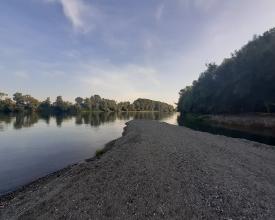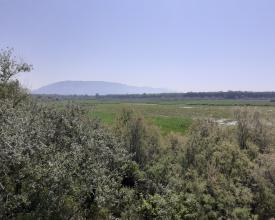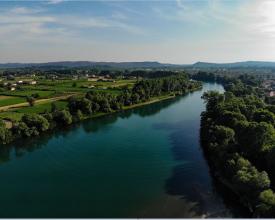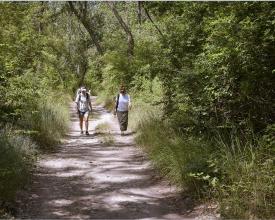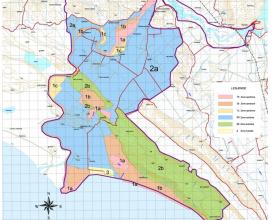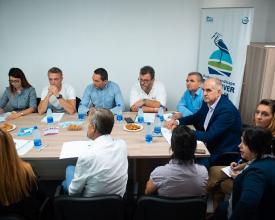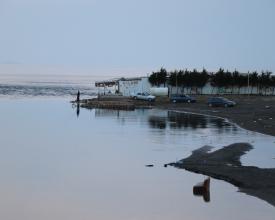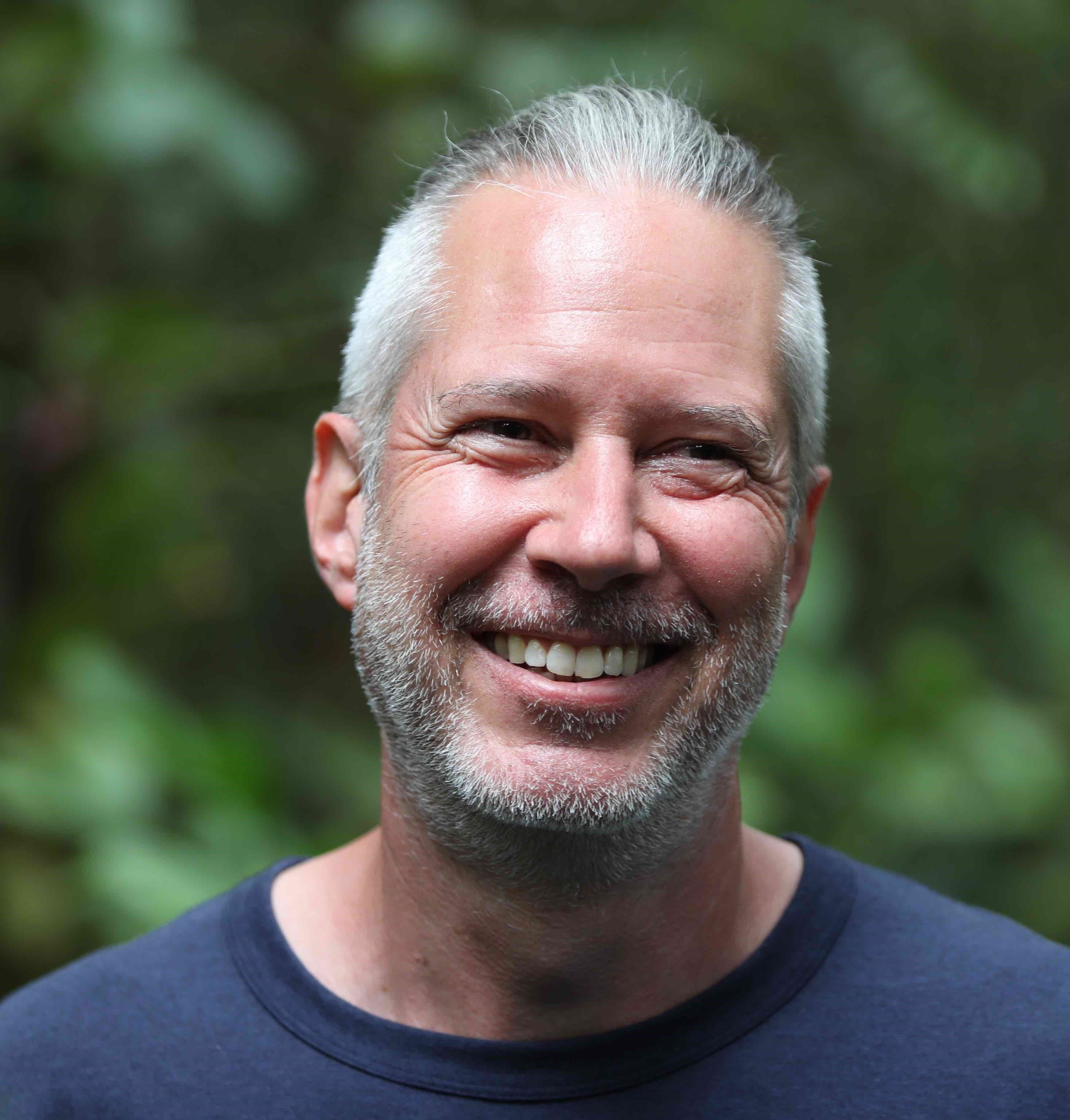
Renforcement des capacités de gestion des aires protégées dans le paysage protégé de la Buna
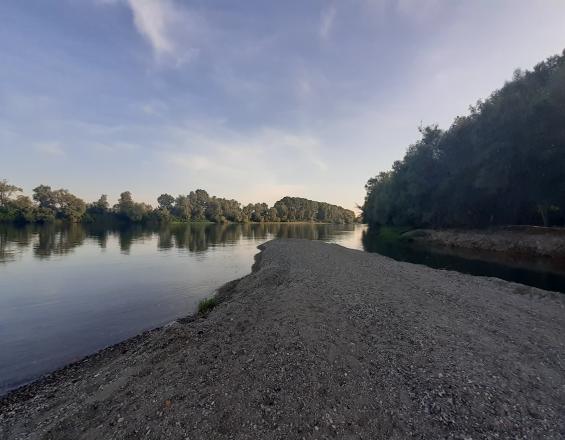
Le paysage protégé de la rivière Buna Velipoje (BRVPL), dans le nord-ouest de l'Albanie, s'étend sur plus de 20 000 hectares et englobe l'embouchure de la rivière Drini, la lagune de Viluni, la rivière Buna et le golfe de Drini qui longe la mer Adriatique. Le paysage protégé est désigné comme une zone protégée de catégorie V et, dans le cadre de la Convention de Ramsar, comme une zone humide d'importance internationale. Le paysage est une zone importante pour les oiseaux et les plantes, car il abrite des espèces d'oiseaux et de plantes endémiques menacées. Il s'agit d'un important couloir de migration des espèces entre la mer Adriatique et les zones intérieures pendant la saison des migrations.
La zone protégée a été déclarée en 2005, mais à l'époque, les autorités locales ne disposaient pas des capacités adéquates ou d'une structure de gouvernance appropriée pour gérer la zone selon les normes requises. La solution consiste à mettre en place une structure de gouvernance, à analyser et à renforcer les capacités des gestionnaires de la zone protégée.
Contexte
Défis à relever
Le paysage protégé de la rivière Buna Velipoje a été désigné comme zone protégée en 2005, afin de préserver sa flore, sa faune et ses paysages. La désignation a été une forte reconnaissance des valeurs naturelles, mais il s'agit de la première étape de la protection et de la préservation.
Les étapes suivantes, importantes, à savoir la création d'une structure de gouvernance solide et la planification de la gestion, n'ont pas été suivies immédiatement, et les processus de destruction se sont poursuivis, parallèlement à un manque de gestion efficace.
L'organe de gestion a dû faire face à une série de problèmes - financement, connaissance des stratégies de gestion et des techniques de restauration écologique et soutien de la communauté.
Emplacement
Traiter
Résumé du processus
Ces éléments sont très étroitement liés. Bien que l'évaluation des capacités et l'examen à mi-parcours puissent être entrepris séparément, la mise en œuvre des recommandations par le biais d'un programme de développement est essentielle au changement et à l'amélioration.
Le programme de formation doit également s'appuyer sur une analyse afin d'aborder les questions les plus importantes et les obstacles à la réussite de la gestion d'une zone protégée.
Blocs de construction
Élaboration d'un plan de gestion
Pendant les dix premières années qui ont suivi la désignation de la zone protégée, l'autorité de gestion était en place mais fonctionnait sans plan de gestion. Elle n'avait pas la capacité interne ou les connaissances nécessaires pour élaborer un plan répondant aux exigences de la gestion d'un paysage protégé.
Le plan de gestion a été élaboré pour fournir les objectifs, les activités et les indicateurs permettant de mesurer les résultats. Le plan comprend un programme d'activités sur dix ans, avec la possibilité d'une révision et d'amendements après cinq ans.
Facteurs favorables
1. Financement
2. Des autorités et des gestionnaires fonciers engagés, qui peuvent apporter leur contribution
3. Personnel ou consultants compétents pour élaborer le plan
Leçon apprise
La partie la plus importante de l'élaboration d'un plan de gestion a consisté à trouver un équilibre entre l'élaboration d'un plan visant à alléger le fardeau des autorités, tout en veillant à ce que les gestionnaires des terres et les décideurs aient leur mot à dire pour s'assurer que le plan est réaliste et qu'il bénéficie d'un soutien.
Dans le cas de la Buna, les autorités n'ont pas été suffisamment consultées ou consultées au départ. Le plan d'activité qui devait conduire au succès s'est avéré irréalisable avec les capacités et les ressources disponibles localement pour le mettre en œuvre.
Création du comité de gestion
Malgré l'existence d'une agence de gestion, la structure de gouvernance nécessitait une contribution formelle plus large, en particulier pour un mécanisme de prise de décision.
Un comité de gestion, comprenant l'autorité de gestion, une autorité chargée de l'eau, le gouvernement local, des représentants de la communauté et le gouvernement régional, a donc été mis en place.
Le comité de gestion a un président, qui a la responsabilité de convoquer des contacts et des réunions régulières, ainsi que des réunions spéciales pour aborder des questions ou prendre des décisions sur la gestion lorsque le besoin s'en fait sentir.
Facteurs favorables
1. Des autorités et des parties prenantes actives, qui s'engagent à participer pleinement.
2. Mise à disposition d'un mandat, à titre d'orientation
Leçon apprise
La principale difficulté dans le cas de Buna a été de faire fonctionner le comité de gestion de manière indépendante. Au cours de la phase 1 du projet, le comité a été convoqué pour la première fois et l'on s'attendait à ce qu'il fonctionne de manière proactive. Cependant, il a dû être réexaminé et reconvoqué au cours de la phase 2 par les ONG, alors que nous espérions qu'il fonctionnerait sans encouragement extérieur.
Examen à mi-parcours - évaluation de l'efficacité de la gestion et analyse des capacités
L'examen à mi-parcours a porté sur la réussite du plan de gestion au milieu de sa période de mise en œuvre. Il a examiné les progrès de la mise en œuvre du plan d'action et l'efficacité des résultats. Une analyse détaillée de la capacité de mise en œuvre et de gestion des zones protégées a été réalisée, car il s'agira toujours d'un défi majeur. Les analyses ont comporté un engagement important avec les autorités et les gestionnaires des terres, afin d'obtenir un retour d'information ouvert. Ils ont fait part de leurs commentaires sur les défis et sur leurs ressources, leurs connaissances et leur expérience, y compris sur les domaines dans lesquels ils n'ont pas réussi à réaliser la mise en œuvre. Ils ont également eu l'occasion de suggérer comment nous pourrions mieux les doter de capacités pour le reste de la période de mise en œuvre.
Facteurs favorables
1. Des autorités et des gestionnaires fonciers engagés, ouverts à un retour d'information clair et à l'auto-évaluation.
2. Du personnel ou des consultants compétents pour entreprendre l'évaluation et collaborer avec les autorités
Leçon apprise
La principale leçon tirée est que ce processus aurait dû être entrepris dans la même mesure lors de l'élaboration du plan de gestion, afin de le rendre plus réaliste.
Programme de formation
Sur la base de l'évaluation de l'efficacité et de la capacité de gestion, un programme de formation a été élaboré et mis en œuvre pour aider à combler les lacunes en matière de connaissances et de capacités.
Le programme comprenait
- les normes mondiales de gestion des zones protégées
- l'identification et le suivi de la flore et de la faune
- l'amélioration de l'expérience des visiteurs des zones protégées
- formation aux médias et à la communication
- SIG et cartographie
- restauration d'habitats naturels spécifiques
- Planification et normes de gestion
- Menaces et adaptation au changement climatique
- pêche durable
Certains équipements ont été fournis, principalement pour faciliter la visibilité, la surveillance et la mobilité dans le paysage protégé.
En outre, les autorités monténégrines ont été invitées à des sessions de partage des connaissances et de promotion de la coopération transfrontalière, et nous avons organisé un voyage d'étude en Espagne pour le personnel albanais afin qu'il visite une zone protégée expérimentée mais comparable en Europe pour apprendre et partager des connaissances pratiques entre les équipes.
Facteurs favorables
1. Financement
2. Des formateurs compétents et bien informés
3. Ressources pour convertir les compétences et les connaissances en changement sur le terrain
Leçon apprise
Il est important de créer un mélange de sessions demandées par le personnel et de celles qui sont évaluées comme étant techniquement les plus importantes pour une gestion réussie.
Un mélange de pratique et de théorie est également important.
Impacts
L'impact positif le plus direct des interventions est l'amélioration de l'état écologique, de l'habitat et de la conservation des espèces dans la zone protégée. Il s'agit d'un impact à long terme qui doit être mesuré sur plusieurs années.
À plus court terme, les capacités et les aptitudes du personnel sont améliorées et celui-ci dispose d'un équipement supplémentaire lui permettant d'accomplir son travail à un niveau plus élevé. Leurs connaissances leur permettent d'être plus satisfaits de leur travail et plus efficaces, et le personnel directement impliqué dans les visites publiques du paysage protégé offre une meilleure expérience, ce qui accroît l'intérêt et le tourisme.
La formation du comité de gestion garantit que la perspective et les exigences de toutes les autorités locales et des principales parties prenantes sont incluses dans le pilotage de la gestion. Il fournit également un contact clair pour les organisations extérieures qui souhaitent faire part de leurs préoccupations ou des possibilités qui s'offrent à elles.
Bénéficiaires
Le comité de gestion de BRVPL, l'autorité de gestion du paysage protégé et les visiteurs/soutiens de la zone protégée.
